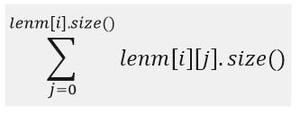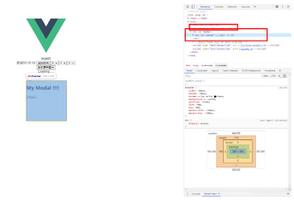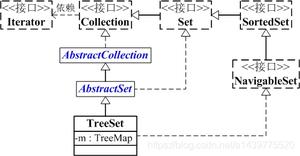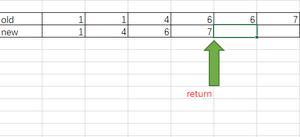vue 中filter的多种用法

1、自定义的过滤器,当然这包括注册在全局和注册在实例化的内部
(1)注册在全局的fliter
(1)全局方法 Vue.filter() 注册一个自定义过滤器,必须放在Vue实例化前面
(2) 过滤器函数始终以表达式的值作为第一个参数。带引号的参数视为字符串,而不带引号的参数按表达式计算
(3)可以设置两个过滤器参数,前提是这两个过滤器处理的不冲突
(4)用户从input输入的数据在回传到model之前也可以先处理
1 2 3 4 5 6 7 8 9 10 11 12 13 14 15 16 17 18 19 20 21 22 23 24 25 26 27 28 29 30 31 32 33 34 35 36 37 38 39 40 41 42 43 | <!DOCTYPE html>
<html>
<head>
<meta charset="UTF-8">
<title>vue自定义过滤器</title>
<script src="../js/vue.js"type="text/javascript"charset="utf-8"></script>
<meta name="viewport"content="width=device-width,initial-scale=1,minimum-scale=1,maximum-scale=1,user-scalable=no"/>
</head>
<body>
<div class="test">
<p>{{message | sum}}</p>
<p>{{message | cal 10 20}}</p> <!--过滤器函数始终以表达式的值作为第一个参数。带引号的参数视为字符串,而不带引号的参数按表达式计算。-->
<p>{{message | sum | currency }}</p> <!--添加两个过滤器,注意不要冲突-->
<input type="text"v-model="message | change"> <!--用户从input输入的数据在回传到model之前也可以先处理-->
</div>
<script type="text/javascript">
Vue.filter("sum", function(value) {
returnvalue + 4;
});
Vue.filter(\'cal\', function(value, begin, xing) {
returnvalue + begin + xing;
});
Vue.filter("change", {
read: function(value) {
returnvalue;
},
write: function(newVal,oldVal) {
console.log("newVal:"+newVal);
console.log("oldVal:"+oldVal);
returnnewVal;
}
});
varmyVue = newVue({
el: ".test",
data: {
message:12
}
});
</script>
</body>
</html>
|
filter是默认会传入当前的item,而且filter的第一个参数默认就是当前的item。
(2)注册在实例化内部
上面的例子直接注册在Vue全局上面,其他不用这个过滤器的实例也会被迫接受,其实过滤器可以注册在实例内部,仅在使用它的实例里面注册
上面的程序改写为:
1 2 3 4 5 6 7 8 9 10 11 12 13 14 15 16 17 18 19 20 21 22 23 24 25 26 27 28 29 30 31 32 33 34 35 36 37 38 39 40 41 42 43 | <!DOCTYPE html>
<html>
<head>
<meta charset="UTF-8">
<title>vue自定义过滤器</title>
<script src="../js/vue.js"type="text/javascript"charset="utf-8"></script>
<meta name="viewport"content="width=device-width,initial-scale=1,minimum-scale=1,maximum-scale=1,user-scalable=no"/>
</head>
<body>
<div class="test">
<p>{{message | sum}}</p>
<p>{{message | cal 10 20}}</p> <!--过滤器函数始终以表达式的值作为第一个参数。带引号的参数视为字符串,而不带引号的参数按表达式计算。-->
<p>{{message | sum | currency }}</p> <!--添加两个过滤器,注意不要冲突-->
<input type="text"v-model="message | change"> <!--用户从input输入的数据在回传到model之前也可以先处理-->
</div>
<script type="text/javascript">
Vue.filter("change", {
read: function(value) {
returnvalue;
},
write: function(newVal,oldVal) {
console.log("newVal:"+newVal);
console.log("oldVal:"+oldVal);
returnnewVal;
}
});
varmyVue = newVue({
el: ".test",
data: {
message:12
},
filters: {
sum: function(value) {
returnvalue + 4;
},
cal: function(value, begin, xing) {
returnvalue + begin + xing;
}
}
});
</script>
</body>
</html>
|
2、使用js中的迭代函数filter
(1)实例一原文
1 2 3 4 5 6 7 8 9 10 11 12 13 14 15 16 17 18 19 20 21 22 23 24 25 26 27 | varapp5 = newVue({
el: \'#app5\',
data: {
shoppingList: [
"Milk", "Donuts", "Cookies", "Chocolate", "Peanut Butter", "Pepto Bismol", "Pepto Bismol (Chocolate flavor)", "Pepto Bismol (Cookie flavor)"
],
key: ""
},
computed: {
filterShoppingList: function() {
varkey = this.key;
varshoppingList = this.shoppingList;
returnshoppingList.filter(function(item) {
returnitem.toLowerCase().indexOf(key.toLowerCase()) != -1
});;
}
}
})
<ul>
Filter Key<input type="text"v-model="key">
<li v-for="item in filterShoppingList">
{{ item }}
</li>
</ul>
|
最终效果实现了根据关键字来过滤列表的功能。
其他的一些Js 迭代方法——filter()、map()、some()、every()、forEach()、lastIndexOf()、indexOf()
总结
以上所述是小编给大家介绍的vue 中filter的多种用法,希望对大家有所帮助,如果大家有任何疑问请给我留言,小编会及时回复大家的。
以上是 vue 中filter的多种用法 的全部内容,
来源链接:
utcz.com/z/379216.html










